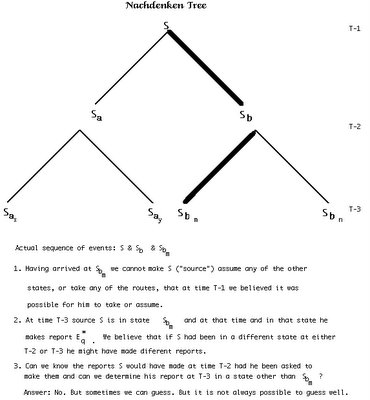Dates: January 28-29, 2007.
Venue: Cardozo Law School, Yeshiva University, 55 Fifth Avenue (5th Ave. & 12th St.), New York (Manhattan), New York
Description of conference:
One of the largest problems faced by crime investigators, litigators, paralegals, judges, triers of fact, and other actors interested in disputes about factual questions in legal settings is the sheer mass of available evidence in many cases. It is often difficult to remember, retrieve, and interpret evidential information, so that patterns, relations, and inconsistencies often go unnoticed. Tools that support the storage, retrieval, and interpretation of masses of evidence could therefore be of great use.
Psychological studies have shown that people's ability to remember, retrieve,
and interpret information is greatly enhanced if they organize information
in a way that is meaningful to them. Scholars of the law of evidence have
long suggested that graphical representations of evidential arguments and
inferences could support humans in making sense of masses of evidence. As
early as 1913, John Henry Wigmore claimed that his charting method promoted rational thinking about legal evidence. While Wigmore had only pencil and paper to draw his cumbersome graphs, today the computer could make his ideas practically feasible for everyone. Software could be used to draw graphical representations of arguments and inferences about masses of evidence. Moreover, such software could be combined with existing database, document management, and search technology so that collections of evidentiary documents could be stored and retrieved in terms of the user's thinking about a case. Such software would also facilitate transfer of case files to others by increasing the transparency of the files, so that subsequent investigators, prosecutors, and fact finders could gain a quicker and better understanding of the case.
Such software is currently being investigated for use in various domains.
Argument visualization software has been designed, for instance, to support
the teaching of scientific reasoning or critical thinking skills (Belvedere,
Reasonable, Araucaria, Convince Me), to support intelligence analysis, and
to facilitate individual or collaborative problem solving (Questmap, SEAS).
Moreover, current artificial intelligence research offers precise accounts
of evidential reasoning and thus provides a clear semantics of graphical
notations as well as ways to compute with them.
In the legal domain, fact investigators and litigators increasingly use software that supports the storage and retrieval of information in terms of conceptual and relational networks (Holmes 2, Analyst's Notebook). However, as yet, such tools offer little or no support for the structuring of human thinking about thus stored information. This software allows users to store evidentiary data in terms of events, objects, actors, and the relations among these things, but it does not allow users to represent how such data support or undermine hypotheses about what has happened.
This interdisciplinary conference brings together scholars and practitioners from such fields as law, philosophy, computer science, artificial intelligence, cognitive psychology, and linguistics who are interested in the graphic visualization of legal evidentiary inference and its support by software tools. The following issues will be addressed:
Current and new graphical means to visualize factual inference and proof
Semantics of such graphical notations: what are the underlying theories of evidential reasoning? (jurisprudential, philosophical, psychological, rhetorical, logical, or mathematical)
Which software tools for graphical representations of factual inference and proof are currently available or being developed?
What are the potential contexts for the use of such software and what are the potential benefits of such software? (crime investigation, litigation, trial, law teaching, etc.)
To what extent can graphic representation of evidential arguments support the automatic evaluation of hypotheses?
How can current insights about human-computer interaction be exploited to increase the usefulness of such software? (e.g., how can visual complexity created by the size of the available mass of evidence be managed?)
Are empirical results available on usability and effects of use of charting methods (whether manual or digital) in legal or other contexts?
What are the practical constraints faced by crime investigators or legal professionals who want to use such software?
Conference officials:
Peter Tillers (Cardozo Law School): Conference chair e-mail address: peter@tillers.net
Henry Prakken (Universiteit Utrecht / University of Groningen): Program
chair e-mail address: henry@cs.uu.nl
Thomas D. Cobb (University of Washington, Seattle): Deputy program chair
e-mail address: tomcobb@u.washington.edu
Panelists:
The public is invited. There is no registration fee. (However, there will be a modest charge for any lunches or dinners that attendees elect to take at the site of the conference, at Cardozo Law School.)
Program details will be provided later.



